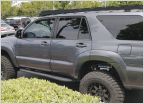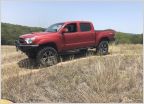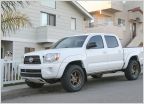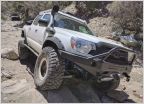-
Welcome to Tacoma World!
You are currently viewing as a guest! To get full-access, you need to register for a FREE account.
As a registered member, you’ll be able to:- Participate in all Tacoma discussion topics
- Communicate privately with other Tacoma owners from around the world
- Post your own photos in our Members Gallery
- Access all special features of the site
mk5 adventures
Discussion in '2nd Gen. Builds (2005-2015)' started by mk5, Sep 6, 2018.
Page 15 of 16
Page 15 of 16


 TacoRuthes Supercharged Weekend Warrior
TacoRuthes Supercharged Weekend Warrior Build that lacks building
Build that lacks building Tom's 2008 Super White DCSB TRD OR - Project OEM+
Tom's 2008 Super White DCSB TRD OR - Project OEM+ The Does Everything, but Sucks at Everything Build
The Does Everything, but Sucks at Everything Build






































